

Government of the Commune
In 1198, the “homines populi” revolted against both imperial and papal sovereignty and destroyed the hated Rocca Maggiore. The Commune of Assisi was first documented shortly thereafter, while the first mention of a Podestà of Assisi dates to 1204. The first Palazzo dei Consoli was near Piazza del San Rufino. By 1215, the ex-church of San Donato (previously the Roman temple) in what became known as Piazza del Comune was in use as the Palazzo del Comune and the residence of the Podestà.
The office of Capitano del Popolo of Assisi was first documented in 1267, and the Torre del Popolo next to the Palazzo del Comune was documented as the residence of this official in 1279. The adjacent Palazzo del Capitano del Popolo was completed in 1282. The Podestà and Capitano del Popolo, who thus occupied adjacent palaces, administered justice and public order in the city. A new palace, the "Palatium Novum Comunis Assisii" was completed in 1295 on the opposite side of the piazza, to the left of the present Arco dei Priori.
The first documentary reference to the Priors of Assisi dates to 1330, when the “new” palace became known as Palazzo dei Priori. The first extension to the right was carried out in ca. 1337 to provide residential space for the Priors. In 1442, Nicolò Piccinino sacked the city, and destroyed both the Palazzo del Capitano del Popolo and the Palazzo dei Priori. The former was never again put to civic use. Instead, Palazzo dei Priori was rebuilt and extend yet further to the right.
Another palace, to the right of Palazzo dei Priori, which the Commune built in ca. 1376, became the official residence of the papal governors of Assisi (i.e. Palazzo del Governatore) from 1555 until 1816.
The sections below deal with this succession of public palaces in turn.
Palazzo dei Consoli (12th century)
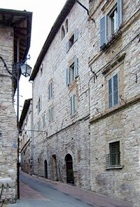
In the 15th century, the palace was incorporated into the adjacent Monastero della Benedetta.
The most distinctive features of the palace are the two bifore windows in the top storey. [Roman foundations are still visible under the adjacent Building, further from Piazza San Rufino.]
Ex-Church of San Donato
This church, which used the fabric of the Roman temple, belonged to the Abbazia di San Benedetto until 1212, when Abbot Maccabeus sold it to the Commune. Guidone di Giovanni del Papa, who was the leading Consul and also Podestà, exercised his offices from this building by 1215. From about this time, the piazza in front of the temple became known as Piazza del Comune.
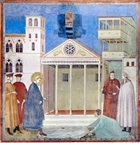
In 1340, for an unknown reason, the Capitano del Popolo and the Podestà exchanged premises.
The civic jail remained in use until 1456.
Torre del Popolo (ca. 1274-1305)
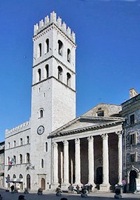
By 1279, the tower had become the residence for the newly instituted Capitano del Popolo. However, when the fresco above was painted in ca. 1290, it was only built as far as the first tier of bifore windows. The memorial tablet to the left of the portal (illustrated below) records the completion of the tower in 1305 under Capitano Cabrino da Parma.
The tower served as the residence of the Ghibelline Muzio di Francesco when he took over the city in 1319.
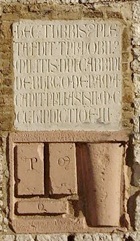
The first clock was installed in the tower in 1450.
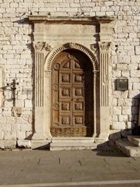
The tower was restored in 1611, in 1791 and in 1926. On this last occasion, which marked the 7th centenary of the death of St Francis, a new bell that had been donated by the Communes of Italy was installed in the presence of King Victor Emanuel III.
Palazzo del Capitano del Popolo (ca. 1275-82)
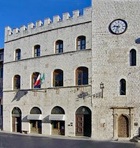
The original gable roof and traceried windows of the palace are recorded in the fresco above. (The present battlements date to the restoration of 1926).
The ground floor of the palace was used for commercial purposes (salt shops, warehouses) from at least 1333.
In 1340, for an unknown reason, the Capitano del Popolo and the Podestà exchanged premises:
The palace was almost completely destroyed in 1442, when Nicolò Piccinino sacked the city, and it was never again put to civic use. It was used as a school after its restoration in the early 16th century.
Palazzi dei Priori (1295 - 1471)
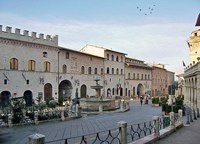
Original Building (1275-95)
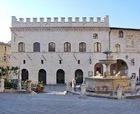
The first documentary reference to the office of Prior of Assisi dates to 1330, when the palace became known as Palazzo dei Priori. The Priors met in a room on the upper storey, while the ground floor was used for shops. The palace also housed the standard weights and measures of Assisi.
First Extension (ca. 1337)

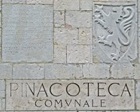
Sack of 1442 and the Second Extension (ca. 1471)
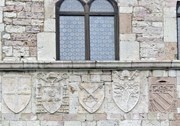
The Palazzo dei Priori was almost completely destroyed in 1442, when Nicolò Piccinino sacked the city. In 1457, the Commune contemplated abandoning it and rebuilding the equally ruined Palazzo del Capitano del Popolo. However, it was subsequently decided to rebuild Palazzo dei Priori. The arms of Cardinal Latino Orsini, Pope Sixtus IV and Cardinal Giovanni Battista Savelli are among those that appear [on the lower part of the front wall]. These were inserted into the facade of the rebuilt palace in the period 1471-80.
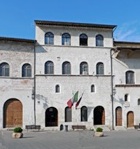
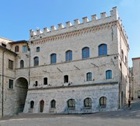
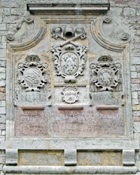
The palaces took on their current appearance (which includes the addition of battlements to the oldest of the palaces) during a major restoration in 1926. The city authorities still occupy much of this complex.
Palazzo del Governatore (14th century)
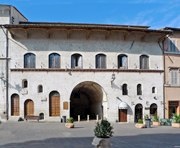
This palace (to the right of Palazzo dei Priori), which belonged to the Commune, was documented in 1376. Part of it was occupied by the city Treasurer, while the ground floor was let out to merchants.
This palace housed a succession of would-be Lords of Assisi, including: Cecchino Broglia di Trino in 1398-9; Guidantonio di Montefeltro in 1408-19; and Nicolò Fortebracci in 1435. It also housed a series of papal legates and their officers.
From 1555 until 1816, this palace was the official residence of the papal governors of Assisi.
Pulpit (1354)
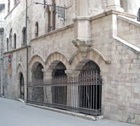
Volta Pinta
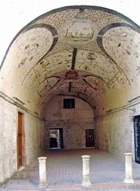
Frescoes(1556)
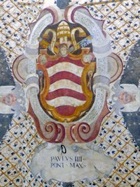
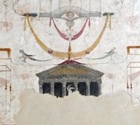
Art from the Public Palaces
All of the following works of art from the public palaces of Assisi are now in the Pinacoteca Comunale.
Fresco Fragments (13th century)
These fresco fragments from the Palazzo del Capitano del Popolo are among the few examples of secular civic art that survive from 13th century Italy:
-
✴The largest of them depicts three figures of horseback:

-
•a knight;
-
•a crowned female; and
-
•her page.
-
The cloth over the knights’ horse bears the Angevin lilies, suggesting that this fresco might have related to the visit of Charles d Anjou, King of Naples to Assisi in 1267.
-
✴Other fragments include two scenes from a series of labours of the months (including this one, for November).
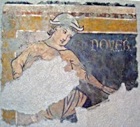
Maestà Civica (late 13th century)
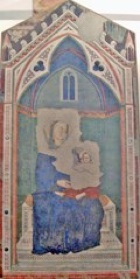
Altarpieces from the Chapel of Palazzo dei Priori (1565-6)
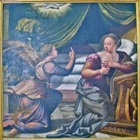
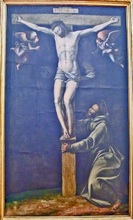
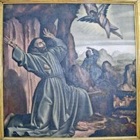
These altarpieces, which are attributed to Dono Doni, depict:
-
✴the Annunciation, which is dated by inscription;
-
✴the Crucifixion with St Francis; and
-
✴the Stigmatisation of St Francis.
St Francis blessing Assisi (1626)
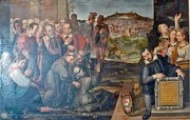
A document of 1841 records that Cesare Sermei painted this panel and presented it to the Commune in gratitude for the award of citizenship of Assisi (an event that was wrongly dated as 1596 instead of 1611). The panel was also documented again in 1884, when it was in the Sala del Consiglio of the Palazzo dei Priori.
In the panel, two friars support the stricken St Francis as he blesses the Assisi as he is being taken from Palazzo Vescovile to the Portiuncula, which was where he wanted to die. He is surrounded by the civic leaders of Assisi. The kneeling figure to the right holds an inscription that gives the date and the text of the blessing of St Francis from the “Liber de conformitate” (1399) of Bartholomew of Pisa. This figure is probably a self-portrait of Cesare Sermei, and the arms to his right are probably his own. The three women behind him probably represent Virtues.
Panels from Palazzo dei Priori (1657)
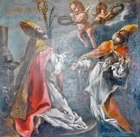
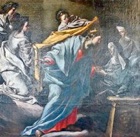
These panels by Giacomo Giorgetti, which originally decorated the ceiling of the Sala del Consiglio, depict:
-
✴SS Rufinus and Victorinus receiving crowns of martyrdom; and
-
✴St Elizabeth of Hungary appearing to the dying St Clare.
Return to Monuments of Assisi.
Return to Walk I.
(Return to Walk II for the piazza behind the oldest part of Palazzo dei Priori).
Return to the home page on Assisi.

